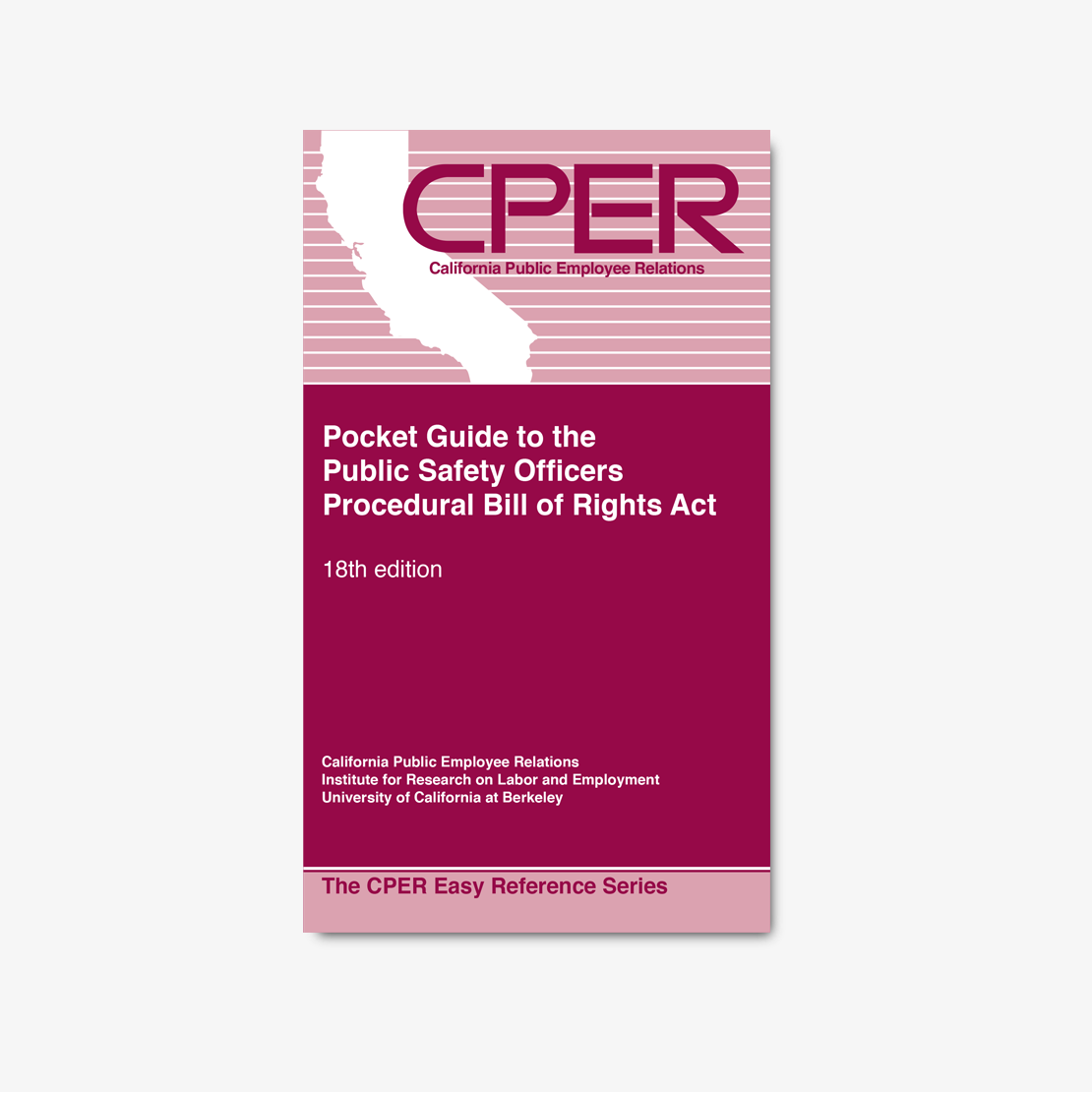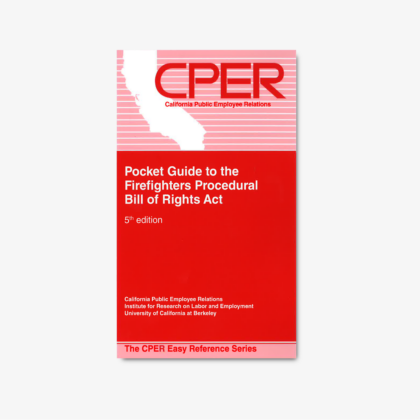CPER’s best-selling Pocket Guide!
Known statewide as the definitive guide to the rights and obligations established by the act covering peace officer discipline. CPER’s Pocket Guide offers a clear explanation of the protections relating to investigations, interrogations, self-incrimination, privacy, polygraph exams, searches, personnel files, administrative appeals, and more. The Guide also includes the text of the act and summaries of all important cases, a table of cases, glossary, and index of terms.
Table of Contents
- Introduction (Page 1)
- History of the Bill of Rights Act (Page 2)
- Analysis and Interpretation of the Act (Page 4)
- Covered Employees (Page 4)
- Procedures for Investigations of Peace Officers (Page 6)
- Complaints from the public (Page 6)
- The nature and scheduling of an interrogation under the Act (Page 7)
- Representation at investigations and interrogations (Page 10)
- Self-incrimination and the ‘Lybarger warning’ (Page 13)
- Documents to be provided (Page 15)
- Tape recording of interrogation (Page 16)
- Assignment of the accused officer during investigation (Page 17)
- Privacy (Page 17)
- Polygraph examinations (Page 17)
- Financial records (Page 18)
- Media attention (Page 18)
- Searches (Page 19)
- Internet (Page 21)
- Personnel Files (Page 21)
- Entries to personnel files (Page 21)
- Access to personnel files (Page 24)
- Confidentiality of personnel records (Page 25)
- Legislative history of personnel files statutes (Page 25)
- Definition of a confidential personnel record (Page 27)
- Discovery of confidential personnel records (Page 30)
- Motion procedure (Page 31)
- Relationship to the California Public Records Act (Page 37)
- Remedies for improper disclosure (Page 38)
- Disciplinary Proceedings (Page 39)
- Administrative Appeals (Page 42)
- Right to an ‘opportunity for administrative appeal’ (Page 42)
- Nature of an administrative appeal (Page 45)
- Remedies for Noncompliance (Page 49)
- Conclusion (Page 52)
- Statutes (Page 53)
- Public Safety Officers Procedural Bill of Rights Act (Page 53)
- Penal Code Definition of Public Safety Officer (“Peace Officer”) (Page 68)
- Code Sections Pertaining to Peace Officers’ Rights (Page 90)
- Evidence Code Provisions Pertaining to Peace Officers’ Personnel Records (Page 96)
- Major Court Decisions (Page 100)
- Covered Employees (Page 101)
- Interrogation Rights (Page 102)
- Statute of Limitations (Page 105)
- Preemption and Local Rules (Page 106)
- Polygraph Examinations (Page 107)
- Punitive Action, Appeal Rights: Pay Loss (Including Reduction While on Probation) (Page 107)
- Punitive Action, Appeal Rights: Personnel Documents (Page 108)
- Punitive Action, Appeal Rights: Probationary Discharge From Peace Officer Status (Page 110)
- Punitive Action, Appeal Rights: Transfer (Page 110)
- Punitive Action, Appeal Rights: Appeal Format (Page 112)
- Cases directly interpreting the Act (Page 112)
- Cases helpful in interpreting the Act (Page 115)
- Adverse Comments: Right to Respond (Page 116)
- Remedies for Violations of the Act (Page 117)
- Federal Decisions Interpreting the Bill of Rights Act (Page 119)
- Court of Appeals decisions (Page 119)
- Trial court decision (Page 119)
- Decisions Pertaining to Confidential Personnel Files (Page 119)
- Materials Covered by Penal Code Sec. 832.5 (Page 119)
- State court procedure: notice to peace officer (Page 121)
- State court procedure: judicial finding of “good cause” based on declarations (Page 121)
- State court procedure: in camera hearing, exclusions and protective orders (Page 122)
- Personnel record cases under the California Public Records Act (Page 122)
- Personnel records in federal court (Page 123)
- Applying a federal statute in state court (Page 124)
- Criminal Sanctions for Filing False Complaints Against Peace Officers (Page 124)
- Glossary of Terms (Page 125)
- Table of Cases (Page 129)
- Index to Subjects (Page 142)


